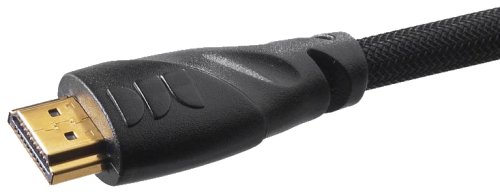HDMI (High-Definition Multimedia Interface) is the first industry-supported, uncompressed, all-digital audio/video interface. While it carries the same video signal as DVI, the big difference with its predecessor is that instead of using the remaining pins for an optional video signal, HDMI uses them to carry seven digital audio channels. To avoid undue consumer confusion, an HDMI plug is completely different to that of DVI.

There are several advantages of HDMI over existing analogue interfaces such as composite, S-Video and component video. HDMI transfers uncompressed digital audio and video for the highest, crispest image quality.The all digital connection ensures rendering of video without the losses associated with analogue interfaces and their unnecessary digital-to-analogue conversions.
HDMI including the ones at https://www.hdmi.org/spec21sub/gaming has the capacity to support all existing TV or PC video formats, including the 720p/1080i high-definition video formats and standard definition formats such as NTSC or PAL, as well as multi-channel digital audio, on a single cable. Previously, the maximum pixel rate of the interface was 165Mpixels/second, sufficient for supporting 1080p at 60Hz or UXGA, but HDMI 1.3, released in the summer of 2006, increased that to 340Mpixels/second, providing support beyond the highest resolution computer monitors available to date.
In addition to a more than doubling of bandwidth, the HDMI 1.3 specification adds support for Deep Color technology, a broader colour space, new digital audio formats, an optional smaller connector for use with personal photo and video devices and an automatic audio/video synching capability. The lip sync enhancement is particularly important in an age when consumer electronics devices are using increasingly complex digital signal processing to enhance the clarity and detail of the content, making the synchronisation of video and audio in user devices an ever increasing challenge that potentially requires complex end-user adjustments to address. HDMI 1.3 incorporates automatic audio synching capabilities that allows devices to perform this synchronisation automatically with total accuracy.
The HDMI Founders include leading consumer electronics manufacturers Hitachi, Matsushita Electric Industrial (Panasonic), Philips, Sony, Thomson (RCA), Toshiba, and Silicon Image. In addition, HDMI has the support of major motion picture producers Fox, Universal, Warner Bros. and Disney, and system operators DirecTV, EchoStar (Dish Network) as well as CableLabs.
It is not really surprising that HDMI has succeeded in establishing itself in the consumer A/V products market before making much of an impact in the PC arena. For a start, the HDMI specification emphasises domestic consumer HDTV applications and doesn’t even mention computer applications. No surprise then that it makes no attempt to unify internal and external display connections. It has somewhat limited performance in terms of resolution and colour depth for PC monitors, and it is not at all obvious that HDMI’s ability to carry audio over a monitor connector is of much, if any, advantage to PC makers. The fact is that it has been designed to be a premium A/V interface, rather than as a broadly available general purpose display interface.
Cost has also been a factor which has hampered widespread adoption within the PC industry. HDMI Adopters must pay an annual fee, due upon the execution of the Adopter Agreement and payable on the anniversary of this date each year thereafter. In the summer of 2006, HDMI Licensing, LLC – the agent responsible for licensing the specification – announced that growing success in the marketplace would make it possible for the annual HDMI administration fee to be reduced from $15,000 to $10,000 from November of that year.
However, in addition to the annual licensing fee, PC manufacturers have to pay an HDCP royalty fee for every single product that build with HDMI sockets. This is a significant financial disincentive, both to the likes of Intel, who clearly don’t want to be paying royalties on every integrated graphics board it makes, as well as the graphics card manufacturers.
While HDMI-enabled graphics cards did begin to emerge in the summer of 2006, it remained unclear how widespread adoption was going to be, not least because of the recent emergence of two rival digital communications standards, DisplayPort and Unified Display Interface (UDI).
- How Do Computers Make Pictures?
- Graphic Card Resolution
- Graphic Card Colour Depth
- Graphic Card Components
- Graphic Card Memory
- Graphic Card Driver Software
- 3d Accelerated Graphic Cards
- Graphic Card Geometry
- 3D Rendering
- FSAA Graphic Card Technology
- Digital Graphic Cards
- DVI Graphic Cards
- HDCP Technology
- Graphic Card HDMI Ports
- Graphic Card Display Port
- Unified Display Special Interest Group
- DirectX
- OpenGL technology
- Direct3D
- Talisman
- Fahrenheit Graphic Cards
- SLI Technology
- CrossFire Graphic Cards